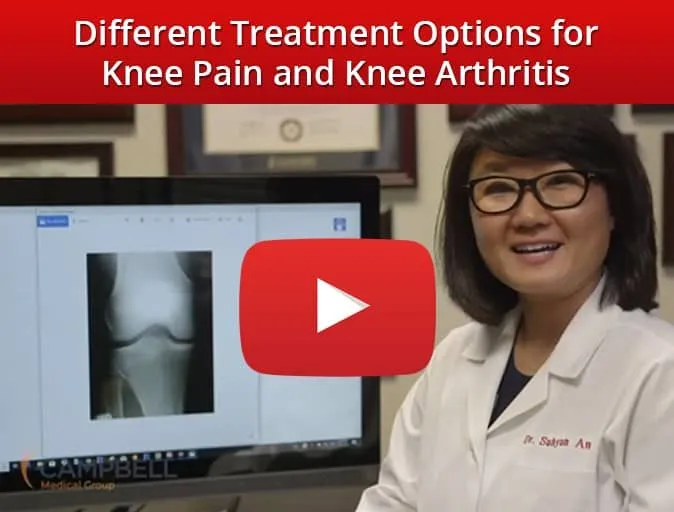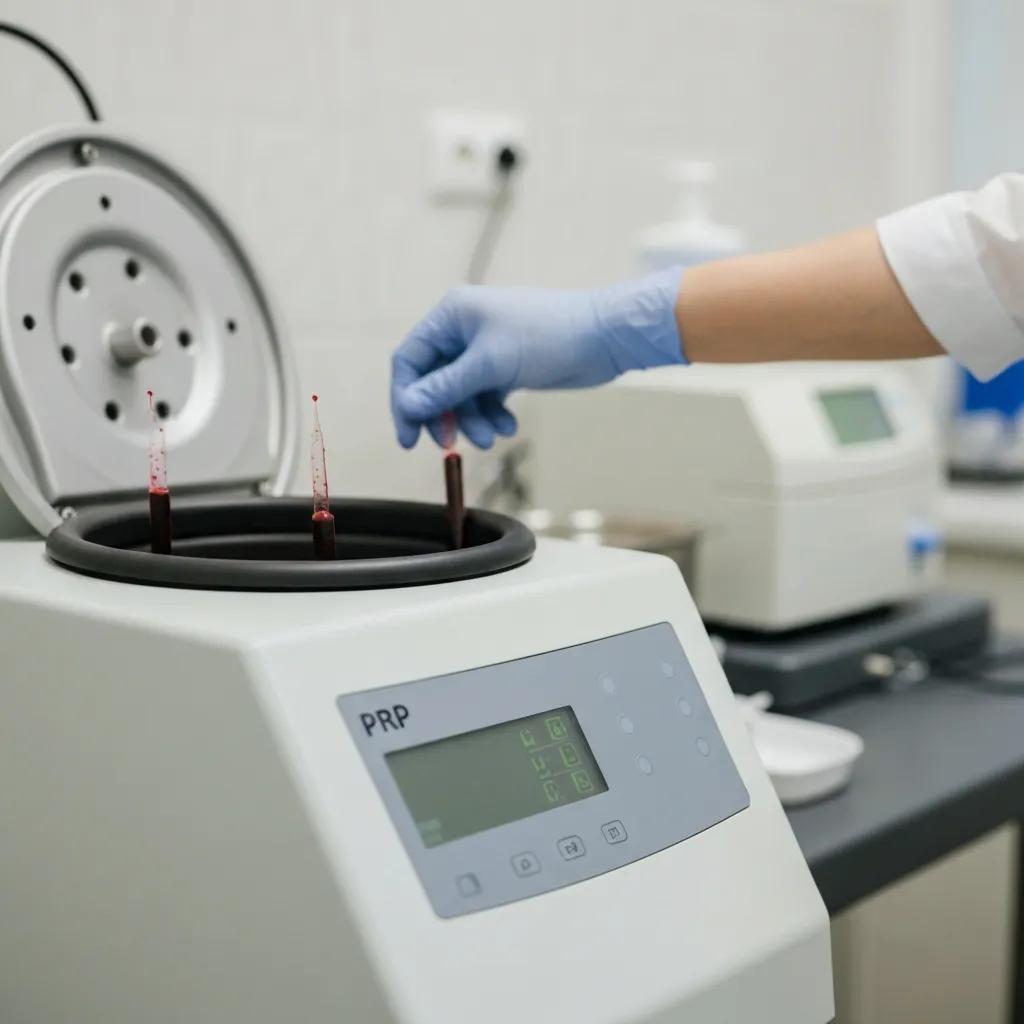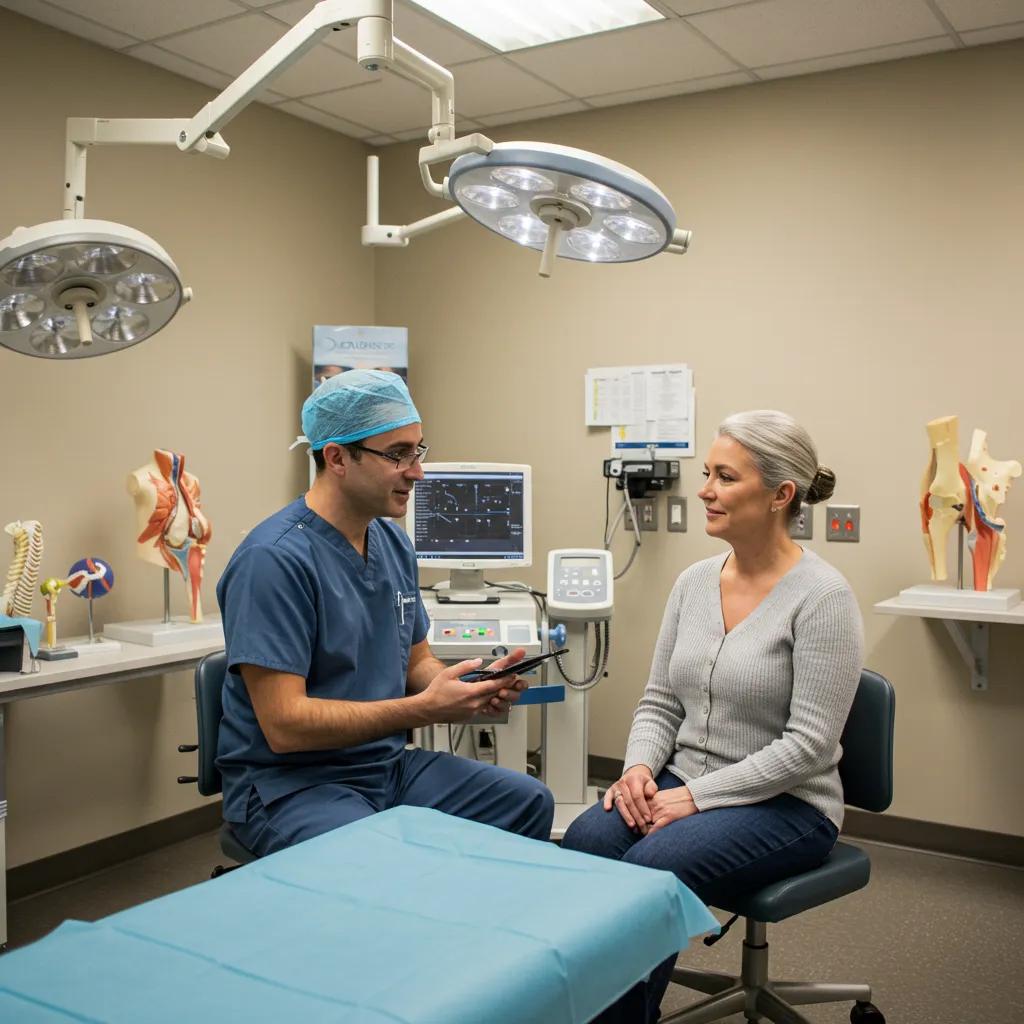
Houston Joint Replacement Guide: Types, Costs & Leading Surgeons
Joint replacement surgery at Houston orthopaedic clinics is designed to address severe joint issues by replacing damaged cartilage and bone with advanced artificial implants. This comprehensive guide explores the most common hip, knee, and shoulder replacement procedures available in Houston, introduces leading surgeons, details average costs and financing solutions, outlines recovery timelines and potential risks, and highlights non-surgical alternatives for joint pain relief. In addition to surgical insights, you’ll discover how non-surgical pain management at Campbell Health Center in Houston can support your conservative treatment goals, potentially delaying or avoiding invasive procedures. You will learn:
- The different types of joint replacement procedures and when each might be suitable
- How to choose experienced orthopedic surgeons in Houston
- The typical cost ranges for knee, hip, and shoulder replacements, along with insurance and financing options
- What to expect during recovery, including potential complications and the role of rehabilitation
- How regenerative medicine and injection therapies can complement or postpone surgery
- Where to find reputable Houston clinics and how to schedule your consultation
- The latest innovations, such as robotic assistance and outpatient procedures
Understanding the various arthroplasty procedures is the first step toward exploring the most common types of joint replacement performed in Houston.
What Are the Common Types of Joint Replacement Surgery in Houston?
Joint replacement, also known as arthroplasty, is a surgical procedure that removes damaged joint surfaces and restores function using prosthetic components. In Houston, most orthopaedic clinics offer total and partial knee replacements, total hip arthroplasties, and a growing number of shoulder resurfacing options. Each procedure is carefully customized to the patient’s unique anatomy, the extent of their arthritis or injury, and their personal functional goals.
Surgeons assess joint pain severity, review imaging results, and consider the outcomes of conservative treatments to recommend the most effective arthroplasty type. Total knee replacement involves replacing the entire knee joint surface with metal and polymer components, while partial knee replacement preserves healthy cartilage and bone in unaffected areas. Hip replacements can be performed using various approaches, including minimally invasive anterior techniques and traditional posterior methods, with implant selection based on bone quality and anticipated activity levels. Shoulder replacements utilize either stemmed or stemless designs, tailored to address rotator cuff integrity and arthritic damage. Familiarizing yourself with these core options naturally leads to a deeper dive into knee, hip, and shoulder procedures next.
What Is Knee Replacement Surgery and When Is It Recommended?
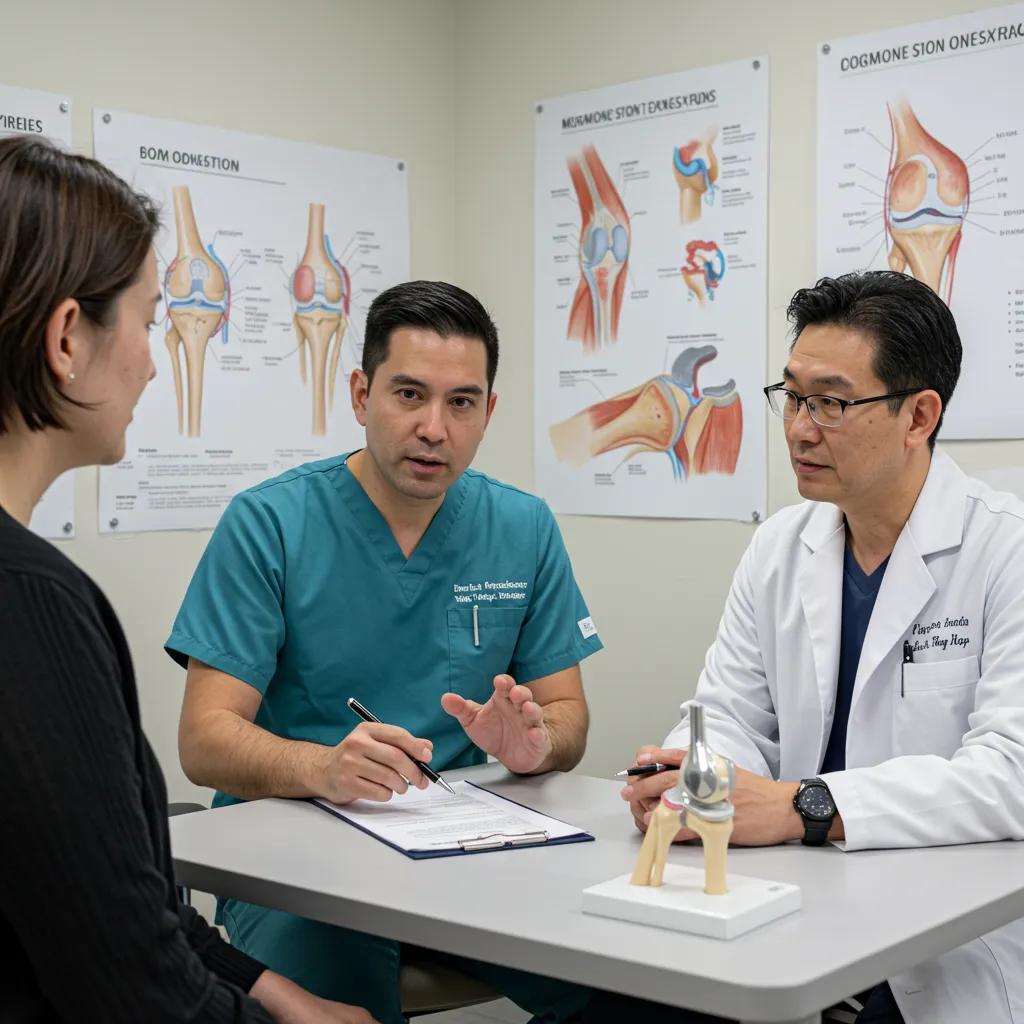
Knee replacement surgery involves replacing the tibiofemoral and patellofemoral joint surfaces with prosthetic implants to alleviate pain and restore mobility. It is typically recommended for patients experiencing chronic osteoarthritis, post-traumatic arthritis, or rheumatoid arthritis when conservative treatments no longer provide sufficient relief for daily activities. By removing worn cartilage and reshaping bone surfaces, this procedure helps redistribute weight evenly and reduces inflammatory pain.
Candidates undergo thorough preoperative assessments, including range-of-motion tests, weight-bearing X-rays, and evaluations of ligament stability. In Houston clinics, robotic-assisted techniques are increasingly used to guide bone cuts with enhanced precision and improved alignment. Patients often experience reduced postoperative discomfort and faster rehabilitation when advanced alignment systems are employed. Understanding the criteria for knee replacement naturally leads to an examination of hip arthroplasty procedures available in Houston.
What Are the Different Hip Replacement Procedures Available?
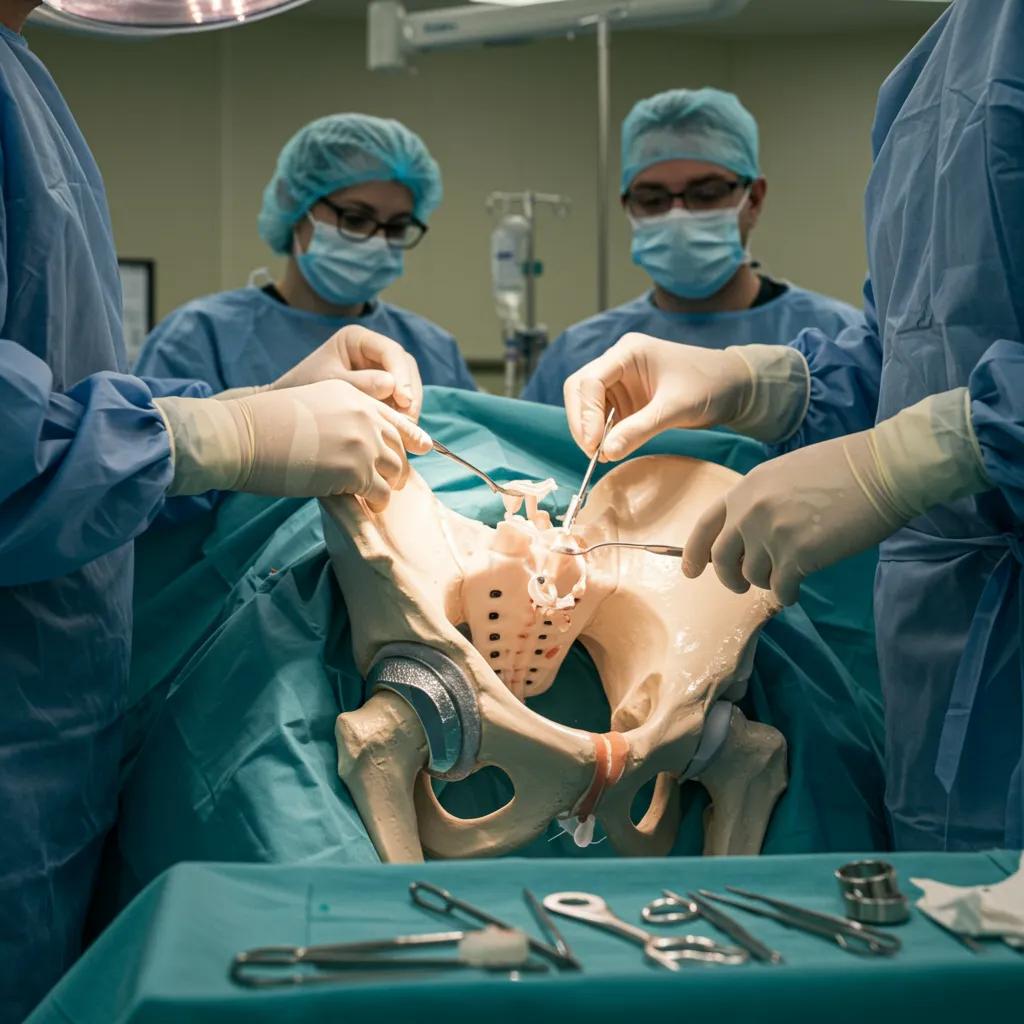
Hip replacement at Houston orthopaedic centers involves replacing the acetabulum (hip socket) and femoral head (ball) with durable prosthetic components. Common surgical approaches include the posterior, lateral, and direct anterior methods, each offering distinct advantages in terms of muscle preservation and early mobilization. Minimally invasive anterior approaches often allow patients to begin walking sooner, while posterior approaches remain a well-established standard with broad surgeon expertise.
Houston surgeons carefully select implants—made from materials like ceramic, metal, or highly cross-linked polyethylene—based on the patient’s age, bone density, and lifestyle demands. Partial hip resurfacing may be an option for younger patients with preserved femoral head structure, potentially delaying the need for a full arthroplasty. Preoperative planning software and intraoperative navigation systems help enhance implant positioning and reduce the risk of dislocation. These hip procedure options provide context for understanding shoulder replacements, which complete the spectrum of major joint arthroplasties.
How Does Shoulder Replacement Surgery Work in Houston Clinics?
Shoulder replacement surgery restores function to the glenohumeral joint by removing the arthritic surfaces of the humeral head and glenoid socket and replacing them with metal and plastic components. It is indicated for severe rotator cuff tear arthropathy, inflammatory arthritis, or advanced osteoarthritis when pain significantly limits overhead activities and impacts quality of life.
Surgeons assess rotator cuff integrity, bone stock, and the patient’s activity goals to determine whether an anatomic total shoulder arthroplasty or a reverse shoulder replacement is the most suitable option. Reverse shoulder arthroplasty reorients the ball-and-socket mechanism to improve mechanics when the rotator cuff is compromised. Houston clinics utilize patient-specific instrumentation and 3D planning to optimize implant placement and minimize postoperative stiffness. This overview of shoulder replacement processes supports the subsequent exploration of top surgeons in the region.
Who Are the Leading Orthopedic Surgeons for Joint Replacement in Houston?
Houston is home to a distinguished group of fellowship-trained orthopedic surgeons who specialize in joint replacement. These experts possess extensive experience in minimally invasive and robotic-assisted techniques. Typically, these specialists are board-certified, perform a high volume of surgeries, and publish outcomes data that demonstrate superior implant longevity and patient satisfaction.
When evaluating a surgeon’s qualifications, consider their fellowship training in adult reconstruction, their annual arthroplasty case volume, their complication rates, and their contributions to peer-reviewed research. Many surgeons work closely with interdisciplinary teams, including physiatrists and physical therapists, to ensure optimal perioperative care. Understanding these benchmarks for qualification helps you select the surgeon who best aligns with your individual health goals and expectations.
What Qualifications and Experience Should You Look for in Houston Orthopedic Surgeons?
When selecting a joint replacement surgeon, it’s crucial to verify their board certification in orthopedic surgery and their fellowship training in joint reconstruction. Surgeons who perform a high volume of procedures—at least 50 to 100 arthroplasties annually—tend to have consistent outcomes and lower complication rates. Publications in peer-reviewed journals focusing on implant performance or minimally invasive approaches indicate a commitment to advancing patient care.
Furthermore, surgeons who integrate computerized navigation or robotic assistance often achieve more precise implant alignment and improved functional scores. Reviewing patient testimonials, complication statistics, and preoperative/postoperative protocols can provide valuable insight into a surgeon’s comprehensive approach to care. These qualification criteria set the stage for the next section on choosing the best surgeon for your specific procedure.
How to Choose the Best Surgeon for Your Joint Replacement Procedure?
Selecting the ideal surgeon involves matching their clinical expertise with your personal health goals and lifestyle needs. Begin by identifying surgeons with fellowship credentials in adult reconstruction and reviewing their published outcome data or registry performance. Consultations should cover surgical approach options, anticipated recovery timelines, and strategies for mitigating patient-specific risks.
During your appointments, assess the surgeon’s communication style, their use of advanced technologies like robotic alignment systems, and their collaboration with rehabilitation specialists. Transparent discussions about infection control protocols, blood management techniques, and pain management pathways are also indicators of comprehensive care. Establishing this rapport ensures confidence in the surgical plan, leading smoothly into discussions about cost and financing.
What Is the Average Cost of Joint Replacement Surgery in Houston?
The costs associated with joint replacement surgery in Houston orthopaedic clinics can vary based on the type of procedure, hospital facility fees, implant materials used, and regional reimbursement rates. On average, total knee replacements typically range from $35,000 to $50,000, total hip arthroplasties from $30,000 to $45,000, and shoulder replacements from $25,000 to $40,000. Most insurance plans cover a significant portion of these costs after deductibles are met, and payment plans or medical financing options can help manage out-of-pocket expenses.
Before your surgery, be sure to request detailed cost estimates from your clinic’s financial coordinator and confirm coverage for implants, hospital stays, and rehabilitation services. Understanding the breakdown of costs empowers you to compare facility fees and financing options effectively before making a decision. Exploring these financial considerations prepares you to review specific cost details for knee and hip/shoulder replacements next.
| Procedure | Average Cost Range | Insurance & Financing |
|---|---|---|
| Total Knee | $35,000 – $50,000 | Medicare and private plans typically cover 70–90% |
| Total Hip | $30,000 – $45,000 | Pre-authorization is often required |
| Total Shoulder | $25,000 – $40,000 | Coverage varies by individual policy |
How Much Does Knee Replacement Surgery Cost in Houston?
Total knee replacement surgery at Houston orthopaedic centers typically costs between $35,000 and $50,000. This estimate includes surgeon fees, implant costs, anesthesia, and facility charges. Insurance plans, such as Medicare and private carriers, often cover 70 to 90 percent of allowable charges after deductibles. Patients may incur out-of-pocket expenses for physical therapy, durable medical equipment, and prescription medications during their recovery period.
Many clinics offer bundled payment options that consolidate all perioperative services into a single package price, promoting transparency. Payment plans or third-party financing solutions can further distribute costs over several months. Reviewing these options allows patients to select a cost structure that aligns with their personal budgets, leading into an overview of hip and shoulder replacement expenses.
What Are the Typical Costs for Hip and Shoulder Replacement Surgeries?
Total hip replacement procedures in Houston generally range from $30,000 to $45,000, while shoulder arthroplasties typically fall between $25,000 and $40,000. Facility fees represent a substantial portion of the overall cost, followed by the charges for implant devices and professional surgeon fees. Preoperative imaging, postoperative rehabilitation sessions, and necessary assistive devices also contribute to the total expenditure.
Many clinics partner with medical financing companies to offer low-interest payment plans, and some hospital systems provide financial counseling services to help navigate insurance approvals. Understanding these cost components enables patients to anticipate their financial responsibilities and compare cost-saving opportunities before scheduling their surgery.
Are There Financing or Insurance Options for Joint Replacement in Houston?
Patients have access to a variety of financing and insurance pathways to make joint replacement surgery more affordable. Medicare and commercial health plans are the primary payers, often covering a significant portion of implant and surgical costs after patient deductibles are met. For remaining balances, hospital or clinic-offered payment plans, medical credit cards, and third-party lending solutions can spread costs over time.
Pre-surgical financial counseling is available to help patients understand coverage limits, prior-authorization requirements, and potential out-of-pocket expenses. Some clinics may also offer sliding-scale payment options or institutional grants for qualifying individuals. With this information in hand, patients can confidently transition to discussing recovery expectations and risk management.
Outpatient Hip Replacement: Anesthesia and Rehabilitation Protocols
Advancements in the surgical approach, anesthetic technique, and the initiation of rapid rehabilitation protocols have decreased the duration of hospitalization and subsequent length of recovery following elective total hip arthroplasty. We assessed the feasibility and safety of outpatient total hip arthroplasty in 150 consectutive patients. A comprehensive perioperative anesthesia and rehabilitation protocol including preoperative teaching, regional anesthesia, and preemptive oral analgesia and antiemetic therapy was implemented around a minimally invasive surgical technique. A rapid rehabilitation pathway was started immediately after surgery and patients had the option of being discharged to home the day of surgery if standard discharge criteria were met. All 150 patients were discharged to home the day of surgery, at which time 131 patients were able to walk without assistive devices. Thirty-eight patients required some additional intervention outside the pathway to resolve nausea, hypotension, or sedation prior to discharge. There were no readmissions for pain, nausea, or hypotension yet there was one readmission for fracture and nine emergency room evaluations in the three month perioperative period. This anesthetic and rehabilitation protocol allowed outpatient total hip arthroplasty to be routinely performed in these consectutive patients undergoing primary total hip arthroplasty. With current reimbursement approaches the modest savings to the hospital in length of stay may be outweighed by the additional costs of personnel, thereby making this outpatient system more expensive to implement.
Newer anesthesia and rehabilitation protocols enable outpatient hip replacement in selected patients, 2009
The feasibility of outpatient procedures, particularly for hip replacements, has been demonstrated through specialized anesthesia and rehabilitation protocols.
What Is the Recovery Process and Potential Risks After Joint Replacement Surgery?
Recovery from joint replacement surgery involves a structured rehabilitation process, effective pain management, and careful monitoring for potential complications. Physical therapy typically commences within 24 hours post-operation to encourage joint mobility, build muscle strength, and ensure safe ambulation. Pain control protocols often combine medications, cryotherapy, and nerve-block techniques to support early activity.
Potential risks include infection, blood clots, implant loosening, and nerve irritation. Clinics in Houston implement antibiotic prophylaxis, blood-thinning regimens, and rigorous postoperative monitoring to minimize these complications. Understanding these essential recovery elements leads into detailed timelines for knee, hip, and shoulder replacements.
How Long Is the Typical Recovery Time for Knee, Hip, and Shoulder Replacements?
Recovery timelines can vary depending on the specific procedure and the patient’s overall health status, but most individuals achieve independent ambulation within two to four weeks.
- Knee Replacement: Achieving a functionally stable gait and the ability to navigate stairs typically returns within six to eight weeks.
- Hip Replacement: Many patients resume normal walking without assistive devices within four to six weeks.
- Shoulder Replacement: Regaining overhead strength and full range of motion progresses gradually over three to six months.
Strict adherence to prescribed rehabilitation protocols and home exercise routines accelerates functional gains. Mastering these rehabilitation strategies seamlessly transitions to exploring non-surgical alternatives for joint pain relief.
What Are the Common Risks and Complications of Joint Replacement Surgery?
Joint replacement surgery carries inherent risks, including infection, deep vein thrombosis (DVT), prosthetic loosening, and periprosthetic fracture. Infections can manifest superficially at the incision site or more deeply around the implant, requiring prompt antibiotic therapy or surgical intervention. Blood clots are mitigated through the use of mechanical compression devices and anticoagulant medications.
Long-term complications, such as implant wear or loosening, may develop years after surgery, potentially necessitating revision procedures. Patient-specific factors like obesity, diabetes, and smoking can increase complication risks and are addressed through preoperative optimization programs. Awareness of these potential issues encourages patients to proactively engage in preventive strategies and rehabilitation.
How Can Physical Therapy Support Your Recovery in Houston Orthopaedic Clinics?
Physical therapy following joint replacement combines manual techniques, targeted exercises, and functional training to restore strength, range of motion, and proprioception. Therapists develop personalized plans that progress from passive motion exercises to resistance training and balance drills. Aquatic therapy and gait training further enhance recovery by reducing joint load and improving coordination.
Regular therapy sessions, typically three times per week during the initial two months post-surgery, yield the most consistent functional improvements. Houston rehabilitation centers often incorporate pain-modulating modalities, such as electrical stimulation and ultrasound, to complement exercise. Mastering these rehabilitation strategies seamlessly transitions to exploring non-surgical alternatives for joint pain relief.
Cost Utility Analysis of Total Joint Arthroplasty
Total joint arthroplasty (TJA), although considered to be highly beneficial, is associated with substantial costs to the US healthcare system. Cost utility analysis has become an increasingly important means to objectively evaluate the value of a healthcare intervention from the perspective of both extending the quantity and improving the quality of life. Relatively little is known about the overall cost utility analysis evidence base in TJA.
The goals of this review were to (1) determine the cost utility of TJA interventions; (2) critically assess the quality of published US-based cost utility analyses using the Quality of Health Economic Studies instrument; and (3) determine what characteristics were common among studies receiving a high quality score.
A systematic review of the literature using the MEDLINE database was performed to compile findings and critically appraise US-based cost utility analysis studies for total hip and knee arthroplasty. Based on review of 676 identified articles, 23 studies were included. We used the Quality of Health Economic Studies instrument to assess study quality and one-sided Fisher’s exact tests were applied to analyze the predictors of high-quality cost utility analysis.
Very few studies compare the cost utility of TJA versus nonoperative intervention; however, the available evidence suggests that TJA can be cost-saving and is highly cost-effective compared with conservative management of end-stage arthritis. The majority of identified studies are focused on the cost utility of new implant technologies or comparisons among surgical alternatives. These studies suggest that the upfront costs associated with new technologies are cost-effective when there is a major reduction in a future cost. The quality of identified studies is quite high (Quality of Health Economic Studies Instrument score: mean 86.5; range, 63–100). National funding source (p = 0.095) and lifetime horizon for analysis (p = 0.07) correlate with hi
Current status of cost utility analyses in total joint arthroplasty: a systematic review, BU Nwachukwu, 2015
The cost-effectiveness of total joint arthroplasty (TJA) has been a subject of significant economic analysis.
Cost-Effectiveness of Total Hip and Knee Replacement
The aim of this study was to perform a cost–utility analysis of total hip (THR) and knee replacement (TKR). Arthritis is a disabling condition that leads to long-term deterioration in quality of life. Total joint replacement, despite being one of the greatest advances in medicine of the modern era, has recently come under scrutiny. The National Health Service (NHS) has competing demands, and resource allocation is challenging in times of economic restraint. Patients who underwent THR (n = 348) or TKR (n = 323) between January and July 2010 in one Scottish region were entered into a prospective arthroplasty database. A health–utility score was derived from the EuroQol (EQ-5D) score pre-operatively and at one year, and was combined with individual life expectancy to derive the quality-adjusted life years (QALYs) gained. Two-way analysis of variance was used to compare QALYs gained between procedures, while controlling for baseline differences. The number of QALYs gained wa
Predicting the cost-effectiveness of total hip and knee replacement: a health economic analysis, PJ Jenkins, 2013
Further economic evaluations of total hip and knee replacement highlight their value in improving quality of life.
What Non-Surgical Alternatives Are Available for Joint Pain Before Considering Replacement?
Non-surgical treatments offer effective pain relief and functional improvement for joint conditions, often delaying the need for arthroplasty. Regenerative medicine therapies, such as platelet-rich plasma (PRP) and stem cell injections, stimulate the body’s natural healing processes to help restore cartilage integrity. Steroid and hyaluronic acid injections effectively reduce inflammation and lubricate the joint, providing symptomatic relief for several months.
Physical therapy, including manual mobilization and targeted strengthening exercises, enhances joint stability and reduces biomechanical stress. Lifestyle modifications, such as weight management, low-impact aerobic exercise, and activity adjustments, complement these therapies. For individuals seeking conservative care in Houston, Campbell Health Center provides specialized non-surgical pain management programs designed to promote long-term joint health and improved mobility. () These alternatives pave the way for informed decisions regarding eventual surgical interventions.
How Does Regenerative Medicine Offer Joint Pain Relief in Houston?
Regenerative medicine utilizes biologic injections to harness the body’s inherent healing mechanisms and promote tissue repair in joints affected by osteoarthritis or injury. Platelet-rich plasma concentrates growth factors from the patient’s own blood to stimulate cartilage regeneration and reduce inflammatory mediators. Stem cell therapies introduce multipotent cells that can differentiate into cartilage or bone tissue, supporting structural restoration.
Clinical studies conducted in 2025 have shown significant pain reduction and functional improvements six months after PRP or stem cell injections, with minimal adverse effects reported. Houston clinics adhere to evidence-based protocols for injection volume, imaging guidance, and post-injection rehabilitation to maximize patient outcomes. Understanding these regenerative options underscores the broader spectrum of joint pain treatments available beyond surgery.
What Role Do Injections and Physical Therapy Play in Avoiding Surgery?
Injections and physical therapy are considered first-line conservative treatments aimed at reducing pain, improving joint mechanics, and strengthening the muscles surrounding the joint. Hyaluronic acid injections help supplement joint lubrication and cushion impact forces, while corticosteroids provide rapid anti-inflammatory effects. Concurrently, targeted exercises and manual therapies work to restore joint alignment, flexibility, and muscle balance.
When used in combination, these interventions can effectively delay the progression of joint degeneration and postpone the need for replacement surgery by months or even years. Patient adherence to therapy regimens and lifestyle modifications significantly influences long-term success. This comprehensive conservative care perspective flows naturally into the criteria for considering surgery after exhausting non-surgical treatments.
When Should You Consider Surgery After Trying Non-Surgical Treatments?
Surgery becomes an appropriate consideration when non-surgical therapies no longer provide adequate pain relief or functional improvement for essential daily activities. Key indicators include persistent pain even at rest or during the night, an inability to walk without assistive devices, and radiographic evidence of advanced joint damage. When multiple conservative modalities—including medications, injections, and therapy—fail to provide relief over a period of six to twelve months, surgical referral is often recommended.
Consulting with an experienced joint reconstruction surgeon ensures a proper evaluation of surgical candidacy, optimization of overall health, and shared decision-making regarding the risks and benefits involved. This decision-making framework guides patients toward the most effective path to achieving lasting pain relief.
Where Can You Find Trusted Orthopaedic Clinics for Joint Replacement in Houston?
Houston offers a robust network of accredited orthopaedic centers specializing in joint replacement. These facilities are equipped with advanced operating suites, on-site rehabilitation services, and multidisciplinary care teams. Clinics typically provide comprehensive preoperative education programs, streamlined admission processes, and dedicated arthroplasty coordinators to guide patients through every stage of their journey.
Evaluating facility accreditation, surgeon credentials, and available support services—such as specialized pain management clinics and comprehensive rehabilitation suites—helps patients select the clinic that best meets their needs. Understanding these clinic attributes sets the stage for scheduling a consultation and embarking on the surgical journey.
What Services Do Houston Orthopaedic Clinics Typically Offer for Joint Replacement?
Houston orthopaedic clinics generally provide comprehensive preoperative evaluations, including medical clearance, diagnostic imaging studies, and patient education seminars. Surgical services encompass traditional and minimally invasive arthroplasty, robotic-assisted implant placement, and inpatient pain management pathways. Postoperative offerings frequently include inpatient rehabilitation, coordination of home health services, and referrals for outpatient therapy.
Ancillary services such as nutritional counseling, smoking cessation programs, and psychological support are available to optimize patient readiness and recovery. Clinics also facilitate financial counseling to clarify insurance benefits and payment options. These comprehensive service portfolios prepare patients to move forward with scheduling their surgical consultation.
How to Schedule a Consultation for Joint Replacement Surgery in Houston?
To arrange a consultation, contact the clinic’s arthroplasty coordinator via phone or through their online form. You will be asked to provide basic medical history and insurance information. The coordinator will then verify your coverage, schedule any necessary preoperative testing appointments, and arrange a meeting with the surgeon to review your imaging and discuss surgical planning.
During this consultation, you will have the opportunity to tour the facility, meet rehabilitation staff, and clarify expectations regarding your hospital stay and home recovery. Clear communication of your personal goals, pain levels, and desired activity aspirations ensures a tailored treatment plan. With these steps completed, your attention can shift to the latest innovations transforming joint replacement outcomes.
What Are the Latest Trends and Innovations in Joint Replacement Surgery in Houston?
Recent innovations making their way into Houston orthopaedic clinics include robotic-assisted surgery, same-day outpatient arthroplasty, and enhanced recovery after surgery (ERAS) protocols. Robotic systems offer three-dimensional planning and haptic guidance, which significantly improve implant alignment and help preserve bone. Outpatient joint replacement programs allow eligible patients to return home within hours of their procedure, reducing the risk of hospital-acquired complications and lowering overall costs.
Enhanced recovery pathways integrate multimodal analgesia, early mobilization, and nutrition optimization to shorten rehabilitation timelines. These trends reflect a broader movement toward patient-centered care that prioritizes safety, efficiency, and improved functional outcomes.
How Is Robotic-Assisted Surgery Changing Joint Replacement Outcomes?
Robotic-assisted joint replacement utilizes preoperative imaging to create a patient-specific surgical plan and guides bone preparation with sub-millimeter accuracy. This advanced technology enhances component alignment, improves limb length restoration, and optimizes soft tissue balance, thereby reducing the risk of early implant failure.
Clinical data from 2025 indicate that robotic assistance can decrease intraoperative blood loss, reduce postoperative pain, and accelerate rehabilitation milestones. As robotic platforms continue to evolve, Houston surgeons are increasingly integrating haptic feedback and augmented reality to further refine surgical precision.
What Are the Benefits of Same-Day Outpatient Joint Replacement Procedures?
Same-day outpatient arthroplasty offers eligible patients the convenience of recovering in the comfort of their own homes while still benefiting from hospital-standard surgical care. Shorter hospital stays minimize the risks associated with hospital-acquired infections and promote a more comfortable recovery environment.
Outpatient protocols rely on optimized pain management strategies, thorough patient education, and robust home health support to ensure safety and successful recovery. Studies have shown comparable complication rates to inpatient stays, with the added advantages of lower overall costs and high patient satisfaction. These benefits are driving the growing adoption of outpatient models in Houston.
How Are Houston Clinics Improving Patient Care and Recovery?
Houston orthopaedic centers are actively enhancing patient care through ERAS protocols, which combine multimodal analgesia, early physical therapy, and nutritional support to accelerate functional recovery. Digital health tools, such as remote monitoring apps and tele-rehabilitation platforms, enable continuous patient engagement and real-time progress tracking.
Integrated care pathways involving surgeons, anesthesiologists, therapists, and pain specialists optimize perioperative planning and reduce variability in outcomes. This collaborative, technology-driven approach fosters rapid mobilization, shorter recovery times, and improved long-term joint performance.
Joint replacement surgery at Houston orthopaedic clinics offers a diverse range of surgical options, pricing structures, and cutting-edge technologies tailored to individual patient needs. While these advanced procedures provide lasting relief, conservative non-surgical care at Campbell Health Center in Houston presents an essential alternative for patients seeking to delay or avoid surgery. Evaluating procedure types, surgeon expertise, and recovery expectations empowers you to make well-informed decisions about your joint health. Whether you pursue arthroplasty in Houston or explore regenerative and therapeutic pain management strategies, the path to restored mobility and reduced pain begins with a clear understanding of all available options.
Frequently Asked Questions
What is the role of physical therapy in joint replacement recovery?
Physical therapy plays a crucial role in the recovery process after joint replacement surgery. It helps patients regain strength, improve range of motion, and enhance overall function. Typically, therapy begins within 24 hours post-surgery, focusing on gentle exercises that promote mobility and reduce stiffness. As recovery progresses, therapists introduce more challenging exercises tailored to the patient’s specific needs. Regular sessions, often three times a week, are essential for achieving optimal outcomes and ensuring a safe return to daily activities.
How can I prepare for joint replacement surgery?
Preparing for joint replacement surgery involves several key steps. First, consult with your orthopedic surgeon to discuss your medical history and any medications you are taking. It’s also important to engage in preoperative physical therapy to strengthen muscles around the joint. Additionally, consider making home modifications to facilitate recovery, such as removing tripping hazards and arranging for assistance during the initial recovery phase. Lastly, ensure you have a clear understanding of the surgical process, recovery expectations, and follow-up care.
What lifestyle changes can help improve joint health before surgery?
Making certain lifestyle changes can significantly improve joint health and potentially delay the need for surgery. Maintaining a healthy weight reduces stress on joints, particularly weight-bearing ones like the knees and hips. Engaging in low-impact exercises, such as swimming or cycling, can enhance joint mobility without causing further damage. Additionally, incorporating a balanced diet rich in anti-inflammatory foods, such as fruits, vegetables, and omega-3 fatty acids, can support overall joint health. These proactive measures can help manage symptoms and improve quality of life.
What are the signs that indicate surgery is necessary?
Indications for considering joint replacement surgery typically include persistent pain that interferes with daily activities, significant joint stiffness, and a noticeable decline in mobility. If conservative treatments, such as physical therapy, medications, or injections, fail to provide adequate relief over a period of six to twelve months, surgery may be recommended. Radiographic evidence of advanced joint damage, such as severe arthritis or joint deformity, can also support the decision for surgical intervention. Consulting with a specialist is essential for a thorough evaluation.
What should I expect during the initial recovery phase after surgery?
During the initial recovery phase after joint replacement surgery, patients can expect a structured rehabilitation process. Typically, physical therapy begins within 24 hours to promote mobility and strength. Pain management is a priority, often involving a combination of medications and therapies. Patients may experience swelling and discomfort, which are normal but should be monitored. Most individuals can expect to gradually increase their activity levels, with many achieving independent ambulation within a few weeks. Regular follow-up appointments will help track progress and address any concerns.
Are there any long-term considerations after joint replacement surgery?
Yes, there are several long-term considerations following joint replacement surgery. Patients should maintain a healthy lifestyle, including regular exercise and weight management, to support joint function and overall health. It’s also important to stay vigilant for any signs of complications, such as persistent pain, swelling, or reduced mobility, which may indicate issues with the implant. Regular follow-up visits with the orthopedic surgeon are essential for monitoring the condition of the joint and ensuring the longevity of the prosthetic. Adhering to rehabilitation protocols can significantly enhance long-term outcomes.
Conclusion
Joint replacement surgery in Houston offers patients a range of options tailored to their specific needs, ensuring improved mobility and pain relief. By understanding the types of procedures, costs, and the expertise of leading surgeons, individuals can make informed decisions about their joint health. Exploring both surgical and non-surgical alternatives empowers patients to choose the best path forward. Schedule your consultation today to take the first step toward a more active and pain-free life.


